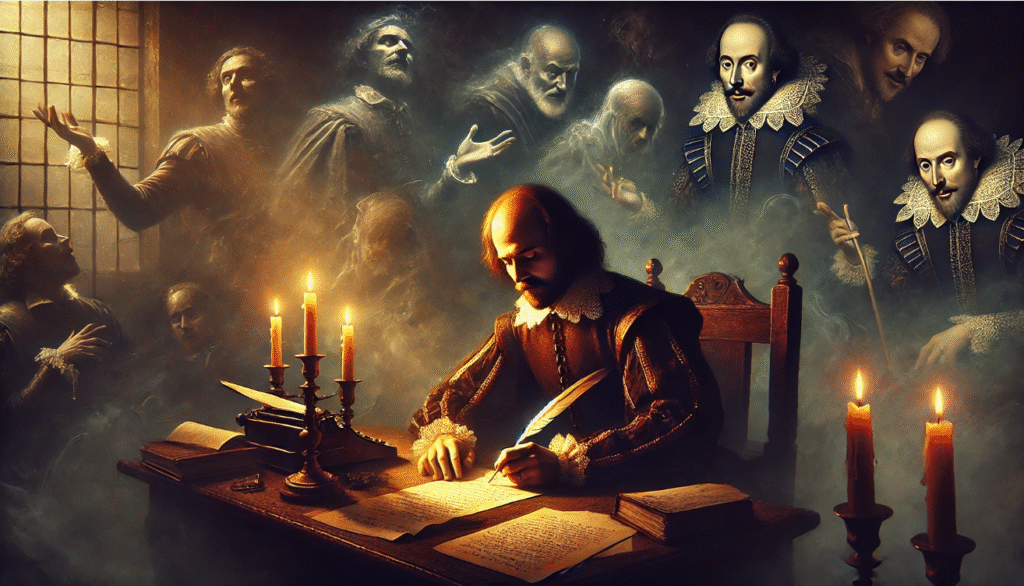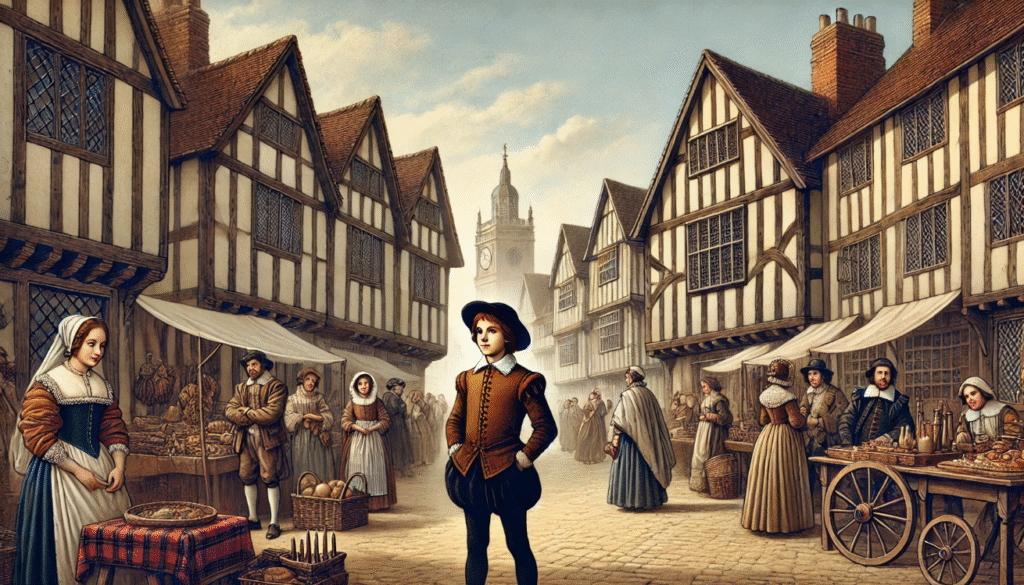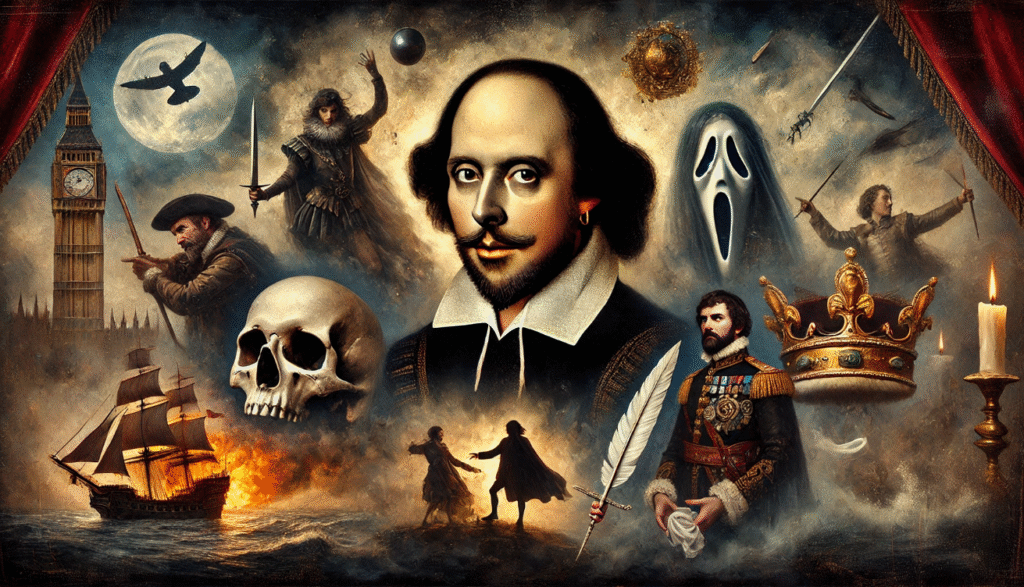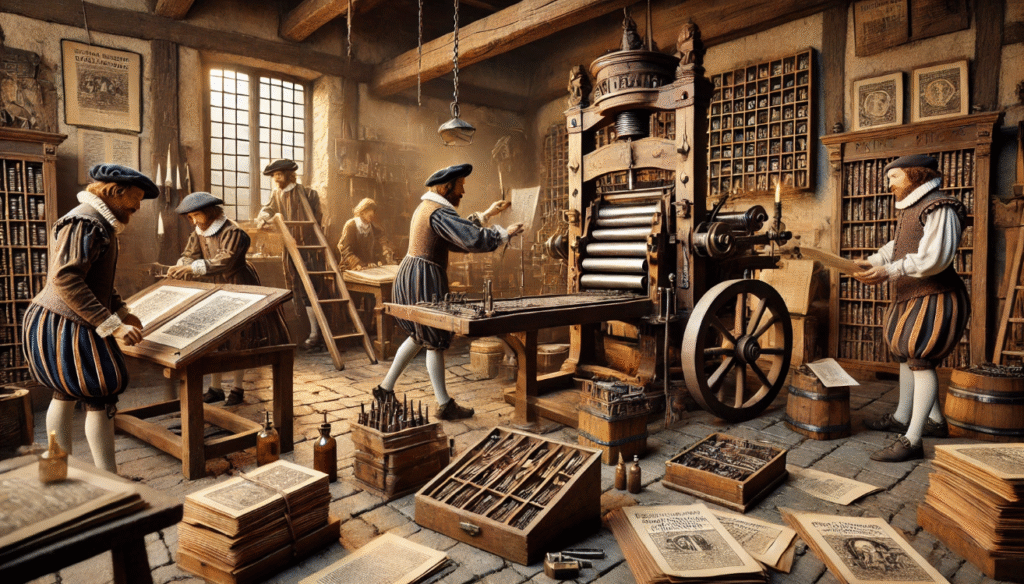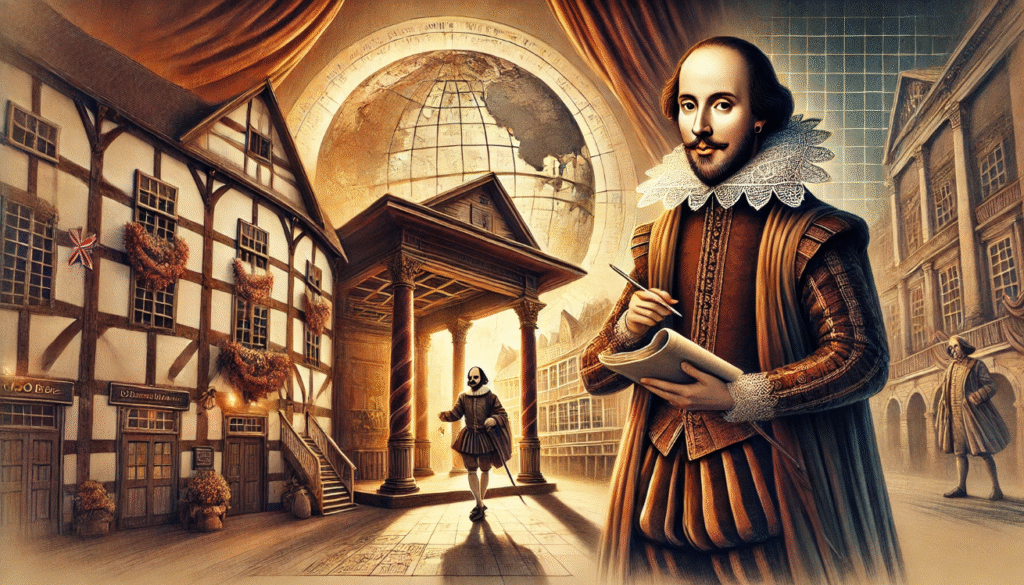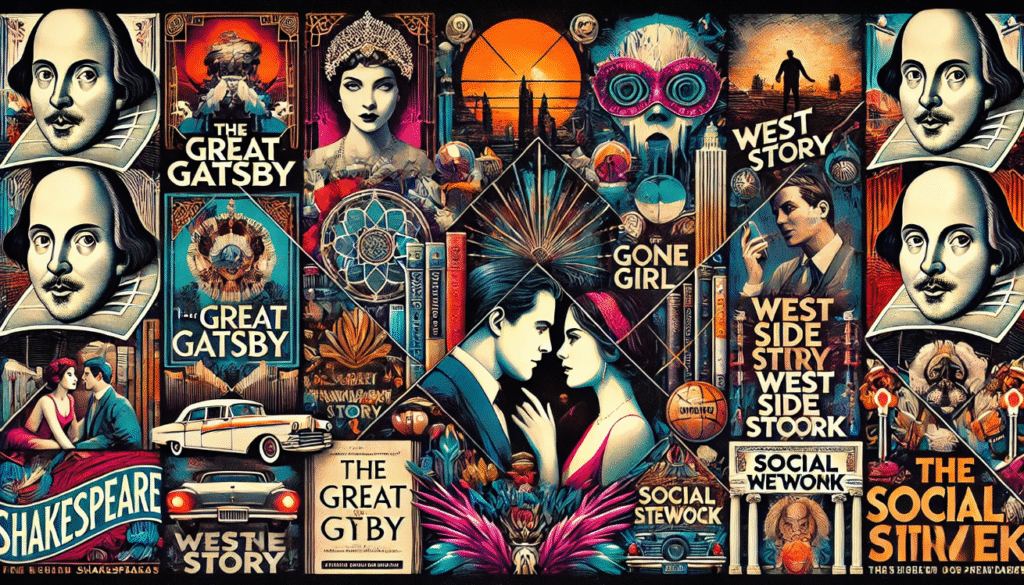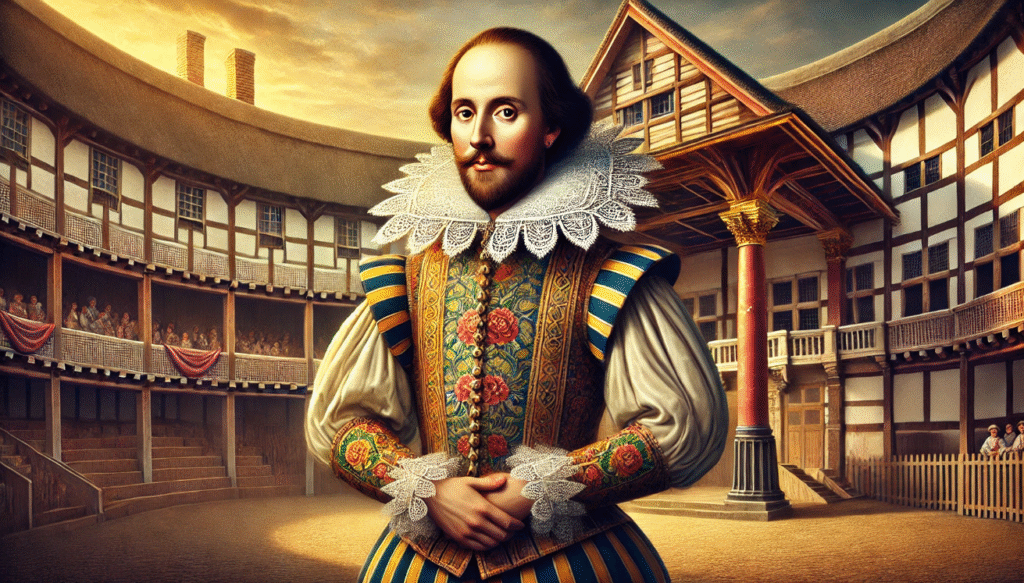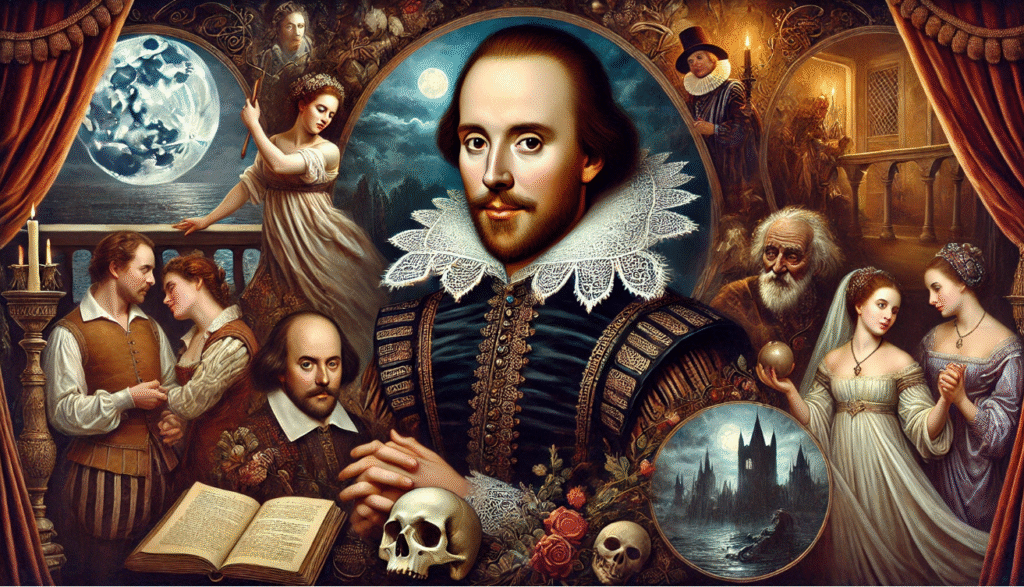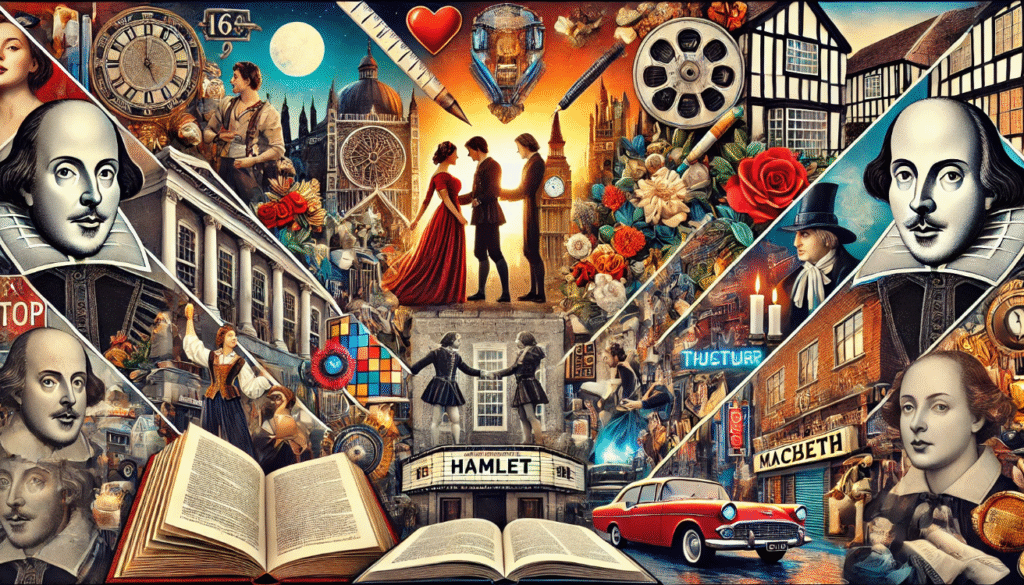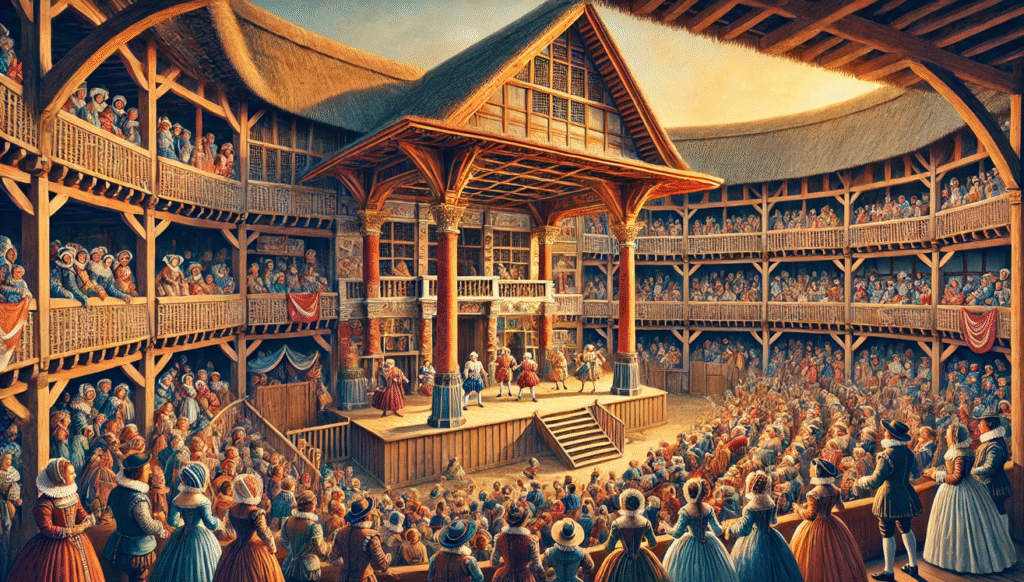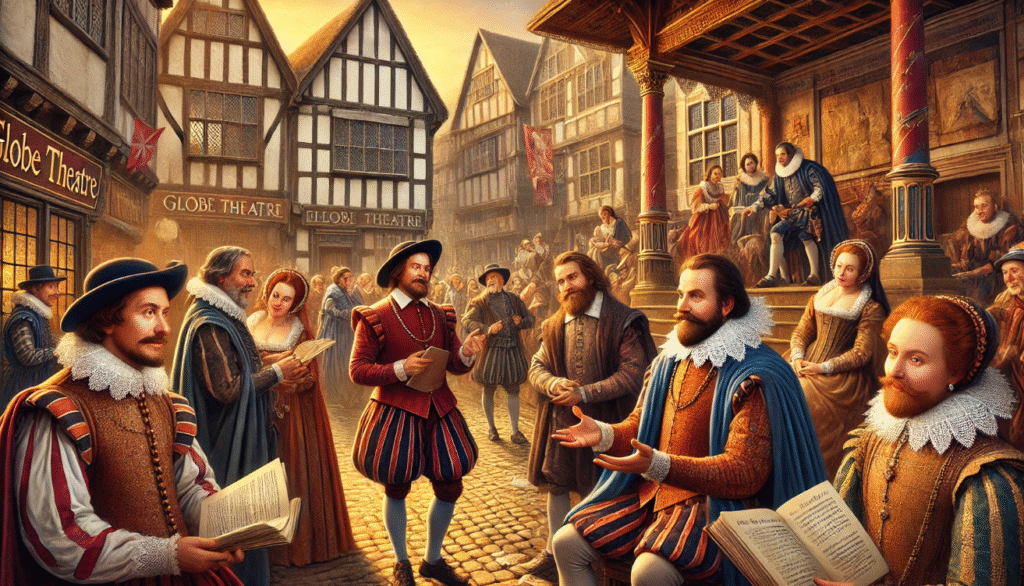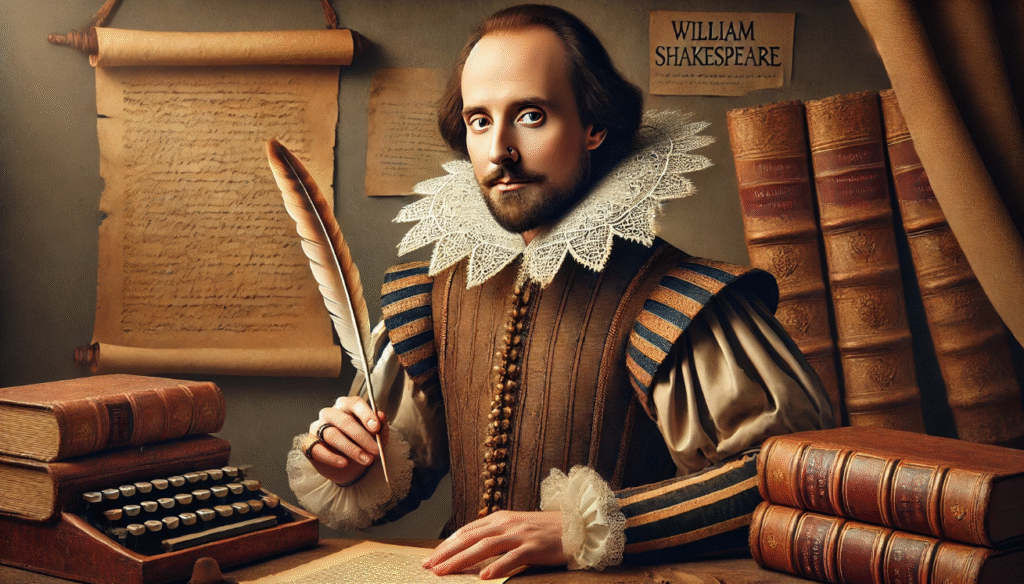 Shakespeare’s contribution to the genre of tragedy is often regarded as the master architect of the modern tragedy, shaping the genre in ways that continue to influence playwrights today. His tragic works like Hamlet, Macbeth, and King Lear are more than just stories of downfall—they are intricate studies of human nature, moral dilemmas, and the complex forces of fate and free will. Through Shakespeare’s contribution to the genre of tragedy innovations, tragedy was transformed from a simple exploration of misfortune into a powerful medium for psychological depth and emotional resonance. This article will explore how Shakespeare’s contributions to the genre of tragedy not only revolutionized dramatic structure but also shaped the modern tragic drama we know today.
Shakespeare’s contribution to the genre of tragedy is often regarded as the master architect of the modern tragedy, shaping the genre in ways that continue to influence playwrights today. His tragic works like Hamlet, Macbeth, and King Lear are more than just stories of downfall—they are intricate studies of human nature, moral dilemmas, and the complex forces of fate and free will. Through Shakespeare’s contribution to the genre of tragedy innovations, tragedy was transformed from a simple exploration of misfortune into a powerful medium for psychological depth and emotional resonance. This article will explore how Shakespeare’s contributions to the genre of tragedy not only revolutionized dramatic structure but also shaped the modern tragic drama we know today.
The Classical Tragedy: A Foundation

Shakespeare’s contribution to the genre of tragedy, which originated in ancient Greece, laid the groundwork for Shakespeare’s revolutionary approach to the genre. Rooted in the works of playwrights like Sophocles and Euripides, classical tragedies followed a specific formula: they focused on a noble protagonist, often a king or hero, who was brought down by a tragic flaw or “hamartia.” The narrative usually involved a conflict between fate and the character’s free will, leading to a catastrophic downfall. Aristotle’s Poetics defined key elements such as catharsis (emotional release), peripeteia (reversal of fortune), and anagnorisis (recognition of truth), all of which became essential to the tragedy genre.
For classical tragedians, the hero’s downfall was typically inevitable, controlled by fate, and often a result of arrogance or hubris. These plays were designed to evoke pity and fear in the audience, allowing for a cathartic experience.
Shakespeare inherited this classical foundation but transformed it into a more dynamic and relatable form. He didn’t just rely on fate; his tragic heroes were often driven by internal conflicts, making their downfalls feel more personal and psychologically complex. By weaving these elements with his own innovations, Shakespeare elevated tragedy to a deeper exploration of human nature, setting the stage for the modern tragic drama we know today.
Shakespeare’s Innovations in Tragic Structure

Shakespeare changed the way tragedies were written by reshaping their structure. Unlike classical tragedies that focused mainly on fate, Shakespeare gave his characters more control over their destinies. His tragic heroes—like Hamlet, Macbeth, and Othello—make choices that lead to their downfall. This shift made tragedies feel more personal and emotionally powerful.
One of Shakespeare’s biggest innovations was the creation of complex, multi-dimensional characters. His heroes are not purely good or evil; they struggle with deep internal conflicts. Macbeth battles ambition, Hamlet wrestles with doubt, and Othello is consumed by jealousy. This psychological depth made Shakespeare’s tragedies more relatable and intense.
Another major change was the flexible plot structure. Instead of strictly following the classical unities of time, place, and action, Shakespeare expanded the settings and timelines, allowing for richer storytelling. His plays could jump between locations and include subplots that added layers to the main story.
By combining personal choice, emotional complexity, and a more open structure, Shakespeare redefined tragedy. His innovations made the genre more human, more real, and ultimately, more enduring.
Psychological Depth in Shakespeare’s Tragedies

One of Shakespeare’s greatest contributions to the genre of tragedy is the deep psychological complexity he gave his characters. Instead of simple heroes or villains, Shakespeare created characters who were driven by powerful inner struggles. This made their actions feel real and their downfalls even more tragic.
For example, Hamlet’s endless questioning of life and death shows a mind trapped by doubt and fear. Macbeth’s growing guilt after murdering King Duncan reveals a man crumbling under the weight of ambition. In Othello, jealousy twists Othello’s love into rage, leading him to destroy what he cares about most.
Shakespeare also used soliloquies to reveal his characters’ innermost thoughts directly to the audience. These speeches, like “To be, or not to be,” gave viewers a window into the private fears, hopes, and battles inside the characters’ minds.
By focusing on internal conflict, Shakespeare made tragedy more than just external events. He showed that the real battles happen within—and that inner turmoil could be just as destructive as any outside force. This psychological depth made his tragedies timeless and continues to inspire modern storytelling today.
Shakespeare’s Influence on Tragic Themes
Shakespeare expanded the themes of tragedy far beyond the classical ideas of fate and downfall. He introduced new, complex themes that explored the darker sides of human nature, making his tragedies richer and more relatable.
Themes like ambition, power, jealousy, betrayal, and madness became central to his tragic plays. In Macbeth, unchecked ambition leads to ruin. In Othello, jealousy drives a noble man to commit unthinkable acts. In King Lear, betrayal by family members shows how fragile trust can be. These universal themes connect deeply with audiences, even centuries later.
Shakespeare also blurred the line between good and evil. His characters often have both noble and destructive qualities, making them feel more human. This approach showed that tragedy isn’t just about punishment—it’s about understanding the complexity of the human heart.
By reshaping tragic themes in this way, Shakespeare made tragedy more emotional, more personal, and more lasting. His influence set the standard for modern tragic storytelling around the world.
The Use of Dramatic Irony in Tragedy
Shakespeare masterfully used dramatic irony to heighten the emotional impact of his tragedies. Dramatic irony happens when the audience knows something the characters do not. This creates tension and deeper emotional engagement as we watch characters unknowingly move toward disaster.
In Othello, the audience knows from the start that Iago is deceiving Othello, but Othello trusts him completely. This gap between what the audience knows and what the hero believes makes Othello’s downfall even more heartbreaking. In Romeo and Juliet, we know Juliet is alive, but Romeo does not—leading to a tragic ending that feels both inevitable and devastating.
Shakespeare’s use of dramatic irony keeps audiences emotionally invested. It builds suspense, deepens the sense of tragedy, and creates a powerful connection between the viewers and the story. This technique became a lasting feature in tragic drama, influencing countless playwrights who followed him.
Shakespeare’s Tragic Flaws: The Blurring of Morality

Shakespeare redefined tragic heroes by giving them deep, personal flaws that blurred the lines between good and evil. Instead of being purely noble or purely wicked, his characters were complex and conflicted, making their stories feel real and relatable.
Hamlet’s indecision, Macbeth’s ambition, Othello’s jealousy, and King Lear’s pride are all flaws that grow from very human emotions. These weaknesses don’t make the characters villains; they make them human. Their moral struggles are what drive the plot and ultimately lead to their tragic ends.
By showing that good people can make terrible mistakes, Shakespeare challenged simple ideas of right and wrong. His tragedies ask hard questions about responsibility, guilt, and forgiveness—questions that audiences are still exploring today.
This blurring of morality made Shakespeare’s tragedies richer and more timeless, influencing how tragic heroes are portrayed in literature and drama even now.
The Impact of Shakespeare’s Tragedies on Modern Drama
Shakespeare’s tragedies changed the way stories are told on stage and screen. His deep characters, emotional conflicts, and powerful themes set a new standard for drama that modern writers still follow today.
Many modern plays, films, and TV shows use Shakespeare’s ideas. Complex heroes with deep flaws, moral struggles, and personal downfalls are now common in storytelling. Writers like Arthur Miller and Tennessee Williams built their tragic characters in ways that reflect Shakespeare’s influence.
Shakespeare also showed that tragedies could explore big human themes like love, ambition, jealousy, and guilt—making the stories meaningful and relatable across time and cultures.
Without Shakespeare’s innovations, modern drama would look very different. His impact is everywhere, proving that true storytelling power comes from understanding the human heart.

Shakespeare’s contribution to the genre of tragedy reshaped storytelling forever. By building on classical foundations and adding psychological depth, moral complexity, and emotional realism, he created tragedies that felt deeply human and timeless. His bold innovations in character development, structure, and theme not only captivated audiences of his time but also set the blueprint for modern drama.
Today, writers, filmmakers, and playwrights continue to draw inspiration from Shakespeare’s tragic masterpieces. His ability to explore the darkest corners of the human heart ensures that his works remain powerful and relevant, even centuries later. Understanding Shakespeare’s impact helps us appreciate not just his genius, but also the lasting influence he has had on the way we tell stories about human nature, conflict, and fate.

